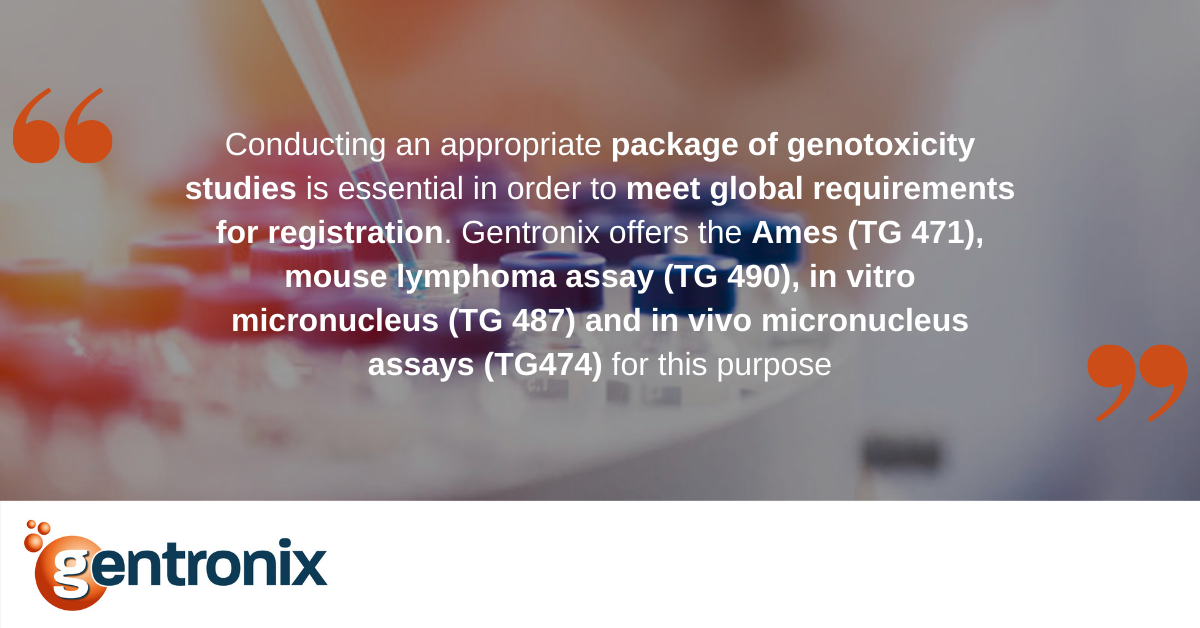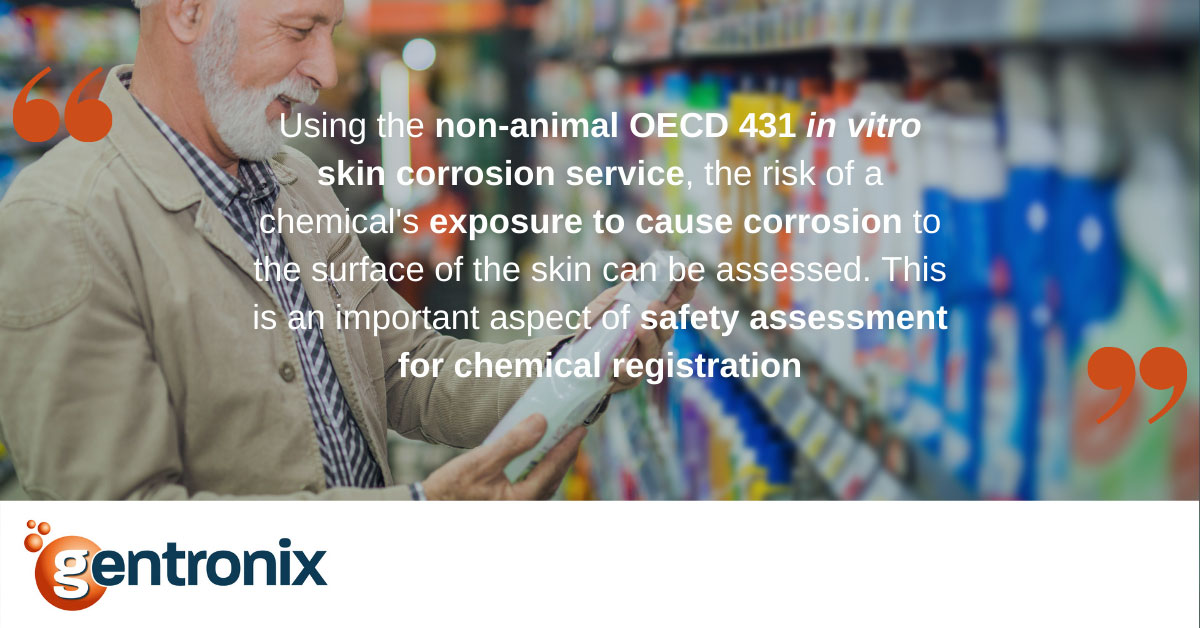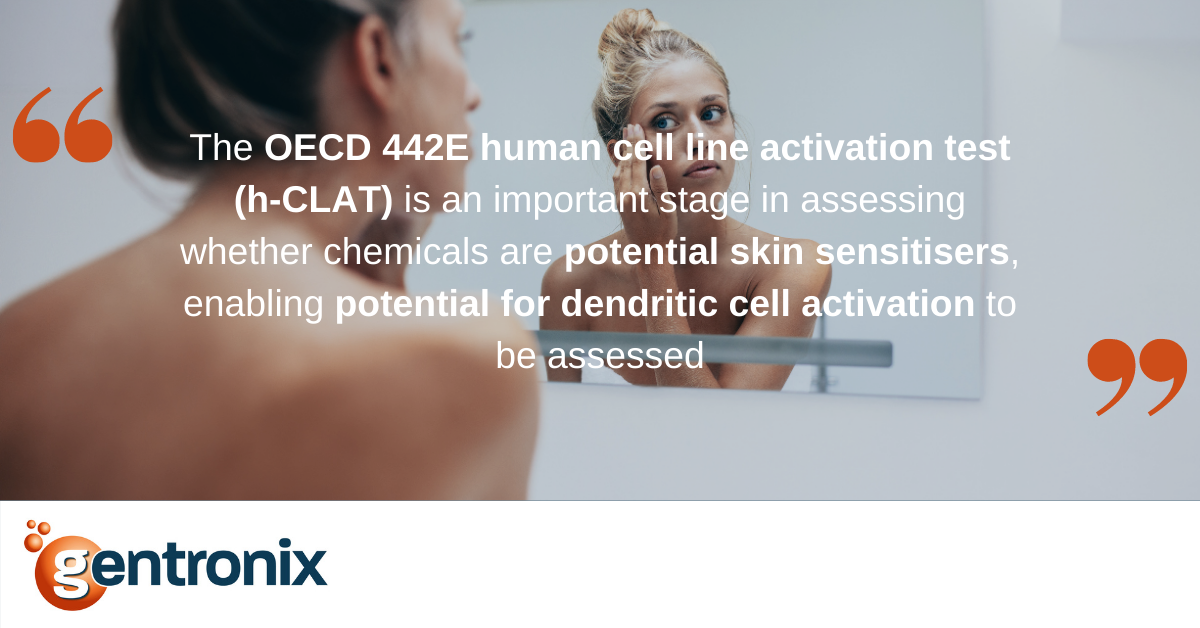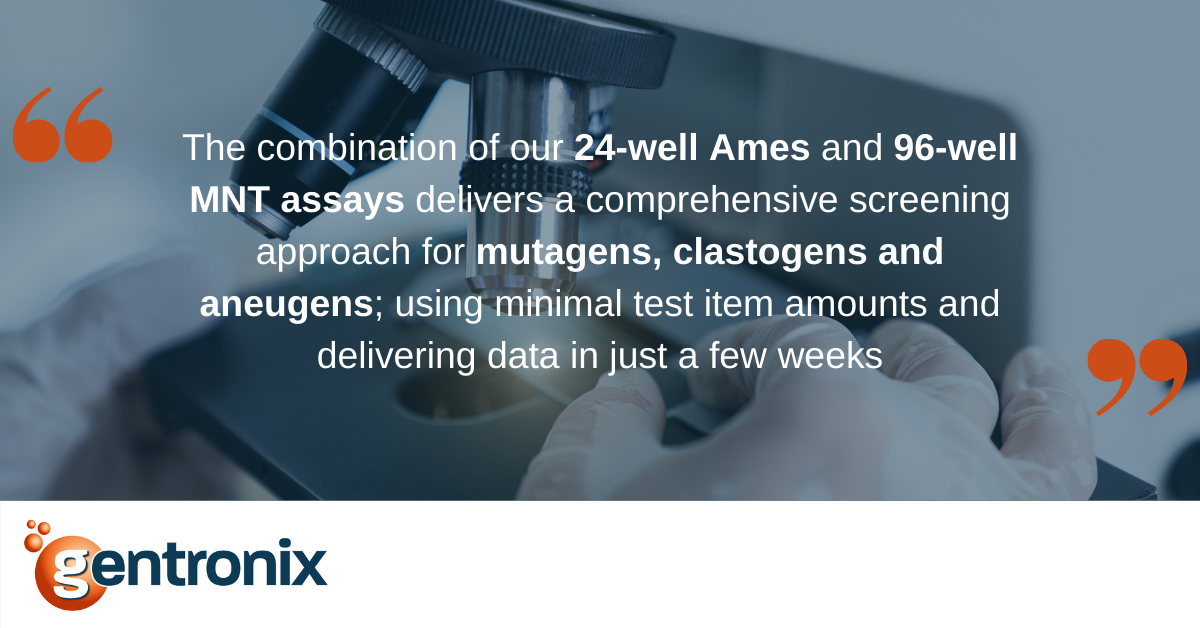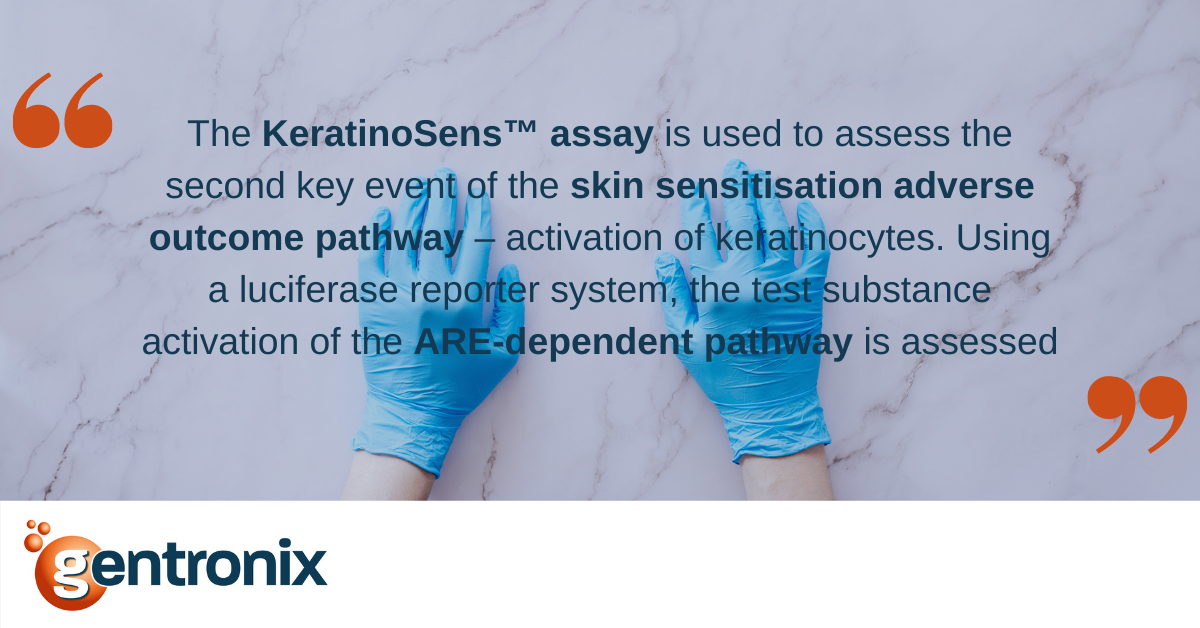What is genotoxicity, and why should we worry about it?
A genotoxin is a substance that permanently alters DNA (mutagenicity) or alters a cell’s ability to regulate DNA structure and content. Mutation or damage to DNA may or may not permanently change its content or structure, depending on several factors, including DNA repair, metabolism, apoptosis, and oxidative stress defence mechanisms.
While generally regulated as a toxicity endpoint in its own right, genotoxicity is a set of modes of action that can lead to adverse outcomes such as cancer, inherited mutations and diseases, developmental toxicity and ageing. As such, testing for potential genotoxic properties is often one of the first things a toxicologist will do to rule out safety hazards or to shape a risk assessment for a new chemical or product.
However, chemically-induced genotoxicity should be put into context. Spontaneously occurring DNA lesions are a common event, with thousands of lesions present in the average cell’s DNA at any given time. This tells us that our bodies are very effective at repairing this damage! In this context, several substances are known to increase mutation, and ultimately tumorigenesis, in animal and epidemiological studies above this repaired level, sometimes at a very low dose and exposure levels.
Whilst there is emerging evidence that some genotoxic substances (including some very potent ones) have a threshold of effect, the prevailing dogma for many years has been to assume that genotoxic substances, particularly those that can induce DNA mutations, either lack a no-effect threshold or that it would be so low as to have little practical utility in assuring safe exposure. This necessitates demonstrating that a chemical does not have genotoxic liability or its exposure can be safely managed if such liability exists.
The good news is that several genotoxicity tests are available, and many of these can be conducted in vitro, reducing animal use in testing. However, as there are three key classes of genotoxic substances, no single study can detect all types of damage – a combination or battery of studies must be used.
Because in vitro studies don’t always correctly predict in vivo outcomes, and because the in vitro studies have been designed to be over-sensitive for detecting potential genotoxicity (i.e. the emphasis is on not missing genotoxic effects), in vivo studies are conducted for chemicals where human or environmental exposure is considered to be high &/or persistent, or to see if an in vitro effect is expressed in an in vivo scenario.
Again, no single in vivo study predicts all types of genotoxicity, so particularly in the context of following up an in vitro positive response, the correct in vivo study needs to be selected based on in vitro study findings (e.g. an in vivo gene mutation transgenic rodent study to follow-up an in vitro Ames positive mutation response).
Here are some examples of different types of genotoxic effects:
- Point mutations. These are typically changes induced at the level of an individual DNA base. However, addition or deletion in a base could lead to a frameshift which may alter several genes on that chromosome. An example of a substance that causes point mutations is sodium azide.
- These cause DNA double-strand breaks typically via binding directly with DNA and forming DNA adducts or chemically cross-linking strands of the DNA helix, resulting in either disrepair (inducing DNA mutation) or result in sections of a chromosome being lost during cell division. Mitomycin C is a good example of a clastogen.
- Aneugens cause whole chromosomes to be lost or gained by cells during cell division by disrupting the proper segregation of chromosomes during mitosis and meiosis. Such missegregation effects (aneuploidy) are linked to cancer and heritable diseases resulting from chromosomal abnormalities within germ cells, such as Down’s Syndrome. Vinblastine is an example of an aneugen.
- Indirect genotoxins. These include substances that produce reactive oxygen species, topoisomerase inhibitors, certain classes of kinase inhibitors or those substances that deplete cellular oxidative defences. Such materials may induce mutational, clastogenic or aneugenic effects.
At Gentronix, we offer a range of in vitro and, soon, in vivo genotoxicity studies that can detect and categorise genotoxic substances, allowing you to identify genotoxic liabilities so you can either eliminate them or restrict exposure to these substances accordingly. We support research across pharmaceutical, agrochemical, food, fragrance, cosmetic and personal care sectors, utilising both early discovery screening and regulatory guideline testing approaches to assess genotoxic potential.
Within this series of articles, we will focus on each class of genotoxicity (point mutations, clastogens and aneugens) and detail how we can help you detect them with appropriate test systems, follow-up adverse results to investigate potential mechanisms and help support the management of risk.


